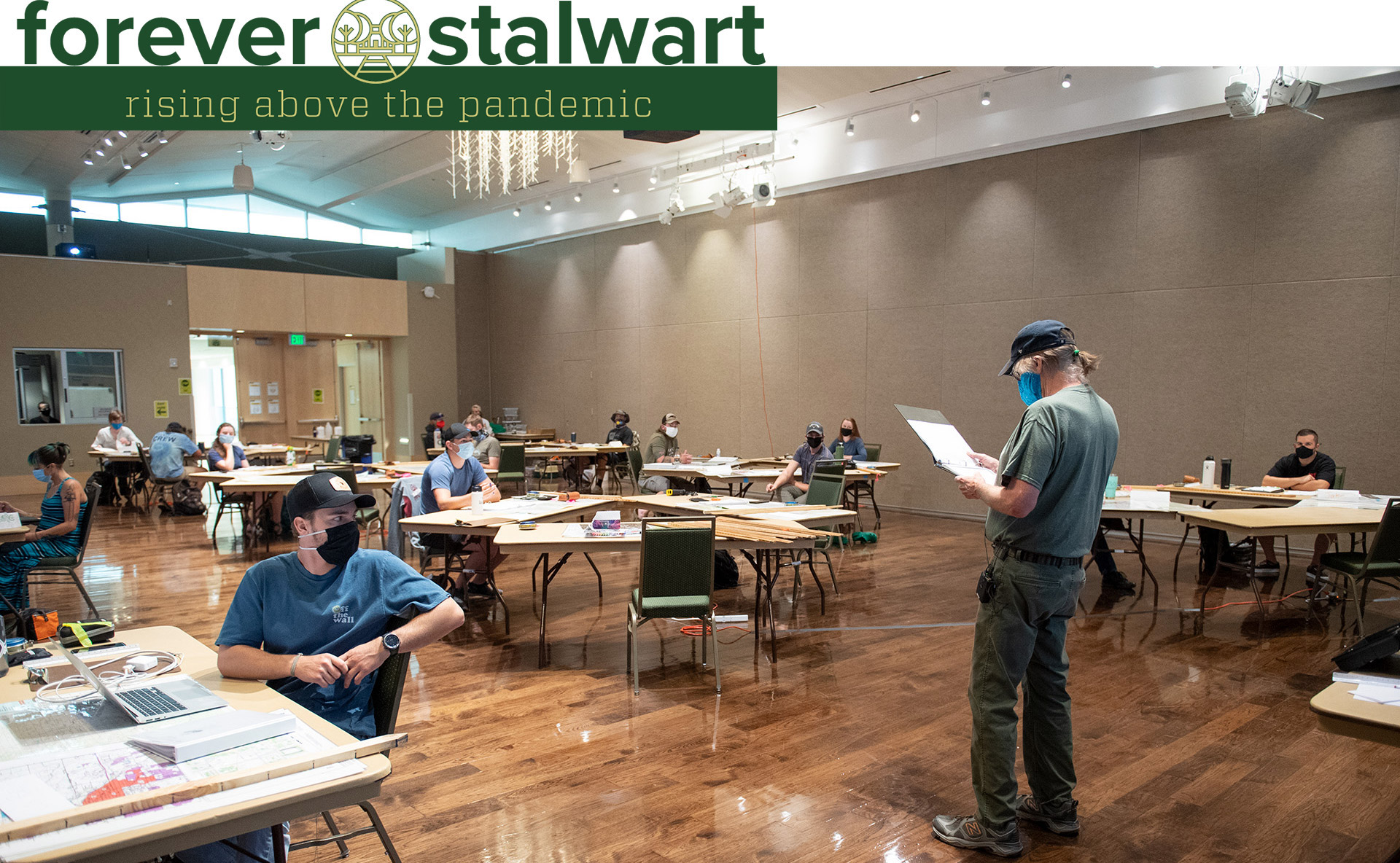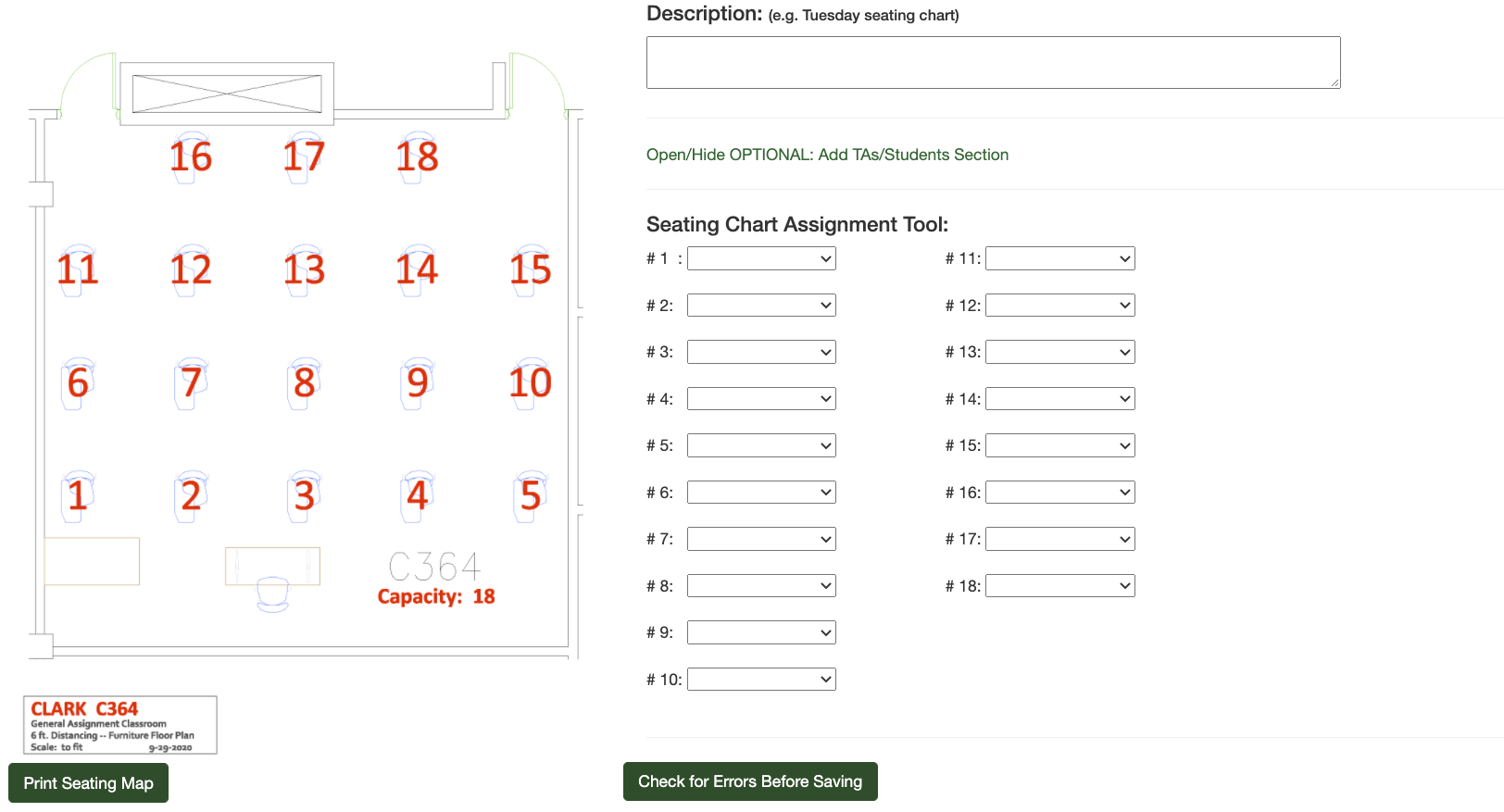
Thanks to a collaborative effort by several units on campus, Colorado State University has launched a new online system for faculty to submit seating charts for their spring classes, streamlining and accelerating the contact tracing process used when a person tests positive for COVID-19.
Faculty started creating assigned seating charts for students in their classes last fall, so that contact tracers could identify who was sitting near someone who tested positive or was exposed to the virus, and then alert those classmates to their possible exposure and need to quarantine.
But the format of those seating charts varied from department to department, weren’t always legible and weren’t stored consistently. They typically contained only the students’ names, meaning that contact tracers had to find CSUID numbers and contact information, creating paperwork delays in a process that ideally should be completed within 48 hours of a positive test for the virus.
“So, they were spending a ton of time going through the process of looking for data, rather than doing what they were hired to do — and what they do well — which is contact tracing during a pandemic,” University Registrar D. Tobiassen Baitinger said. “We thought we could make that process easier and more efficient.”
More efficient process
Now, thanks to a joint effort by Facilities Management, IT professionals and the Office of the Registrar, there is a “Seating Chart” link next to each course section on ARIESweb. When faculty view their class lists, they use the link to bring up a diagram of the seating arrangement in the classroom, complete with numbered seats. For each numbered seat, faculty can click on a dropdown menu of students enrolled in the class and select who is assigned to each seat for the semester.

Instructors are expected to create these digital seating charts either before in-person classes begin the week of Jan. 25, or on the first day that they meet with their students face-to-face. The deadline to do so is Feb. 1. Faculty should also update their charts if any students drop or add their courses.
With this new system, when contact tracers need to identify those sitting near a student who is exposed or tests positive for the coronavirus, they simply enter the student’s CSUID number, bringing up seating charts for all of that student’s courses that have an in-person element. The system identifies that student’s desk in each class — allowing tracers to see which students were sitting in close proximity.
“Effective contact tracing relies on timely identification of individuals that may have been exposed to COVID-19,” CSU Public Health Administrator Jeannine Riess explained. “The team was challenged last semester in responding quickly to potential classroom exposures due to difficulty in obtaining seating charts in a timely manner. The new system will greatly enhance contact tracing by providing immediate access, preventing days of delay to obtain the information required for evaluation of classroom exposures.”
“The seating chart tool is an excellent example of the collaboration and partnership among our IT professionals to create something great for campus,” added Vice President for Information Technology Brandon Bernier. “The IT professionals involved did a wonderful job in understanding the requirements and needs of various campus stakeholders to design something that will be very beneficial. Tae Yamaki and the rest of the Registrar’s Office IT team have created something that will be an exceptional experience for our CSU community, and something I believe is a model for other institutions across the country.”

This screenshot shows what the new seating chart system looks like for a classroom in the Clark Building.
Process started when pandemic began
For Kristi Buffington, space information and data manager for Facilities Management, it’s been the latest development in a process that started at least seven months ago, to help ensure that about two-thirds of fall classes would have an in-person element.

Facilities staff started last summer by searching the construction archive for furniture placed in each general assignment classroom, then measuring furniture in rooms that were not included in the archive. Staff then drew the configurations in a CAD (computer-aided design) program, with six feet between each seat, maximizing capacity.
They repeated the process for departmental classrooms, removing excess furniture, placing signs and tape on chairs that could not be removed in auditoriums, and taping an X on spots where moveable desks/seats should be placed. All faculty, staff and students are being reminded that they shouldn’t change the seating configuration or move furniture in any classroom.
After classes went remote after fall break, Buffington said, facilities staff returned to each classroom and lab to measure all the tables, benches and desks, and drew them in CAD again. Then they numbered every seat/station on the diagrams, created pdf files for about 540 classroom layouts, and provided those to the Office of the Registrar to use in the new application for seating charts.
“They did a ton of work,” Tobiassen Baitinger said of the units involved. “It was a huge lift.”
Positive feedback

Tobiassen Baitinger added that 17 instructors did a trial run of the new system in December, and provided valuable input. One result was the addition of a feature that allows teaching assistants’ seats to be added to the charts.
“There was overwhelmingly positive feedback,” Tobiassen Baitinger said, adding that the new system is yet another example of the CSU community working together to overcome challenges during the pandemic.
“Throughout the last 10 months, everyone has been in overdrive, just trying to create solutions,” she said. “We’ve been saying that we’re all in this together, everyone’s pitching in, and this is a contribution to that overall effort of supporting learning at CSU. This was a great partnership between the Office of the Registrar, Division of IT and Facilities Management. Anytime we can create a cross-divisional partnership, it’s definitely a win for the University.”
Forever Stalwart: Rising Above the Pandemic
This article is part of the “Forever Stalwart: Rising Above the Pandemic” series, telling the inside stories of how the CSU Ramily has rallied its brilliant minds, great hearts, creativity and collaborative spirit to continue its land-grant mission and overcome the challenges of COVID-19 with innovation and resilience.